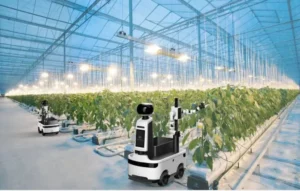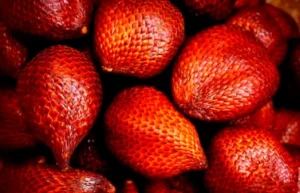Root-knot nematodes (Meloidogyne spp.) are one of the most pervasive threats to global agriculture. They cause annual losses exceeding $100 billion in vegetables, fruits, and field crops. In regions such as sub-Saharan Africa and South Asia, these losses can be particularly devastating, affecting food security and rural livelihoods. With traditional chemical nematicides facing regulatory bans, environmental concerns, and nematode resistance, the industry must transition to science-driven, integrated strategies. For example, Brazil has seen promising results using certain beneficial fungi to reduce nematode populations. This article delves into the complexities of nematode control, presenting an actionable framework that combines biological agents, agronomic practices, and targeted chemical interventions to achieve long-term, sustainable protection.
1. The Unrelenting Challenge: Why Root-Knot Nematodes Persist
Root-knot nematodes thrive due to their biological adaptability and environmental exploitation.
- They are hyper-reproductive and resilient. Females produce 200–300 eggs per cycle, and the eggs can withstand soil temperatures ranging from -10°C to 60°C for up to three years. They can even survive without host plants.
- Environmental Amplifiers: Monocropping, greenhouse cultivation, and the use of uncomposted manure (e.g., poultry litter) introduce nematode eggs into the soil, creating persistent infestations.
- Crop vulnerability: Critical cash crops such as tomatoes, cucumbers, peppers, and beans often lack genetic resistance due to selective breeding for traits such as yield and taste rather than disease resistance. This forces farmers to rely heavily on external control methods, such as pesticides. However, various breeding programs are underway to develop new crop varieties with enhanced resistance, which aims to reduce dependence on chemical inputs in the future.
- Compound damage: Nematode-induced root galls stunt growth and create entry points for secondary infections by fungi (e.g., Fusarium) and bacteria (e.g., Ralstonia), doubling crop losses.
2. The Decline of Chemical Nematicides: A Costly Solution
| Chemical Class | Key Agents | Critical Challenges |
| Halogenated HC | Chloropicrin, MB² | Banned globally (ozone depletion, carcinogenicity); limited efficacy against eggs. |
| Organophosphates | Thiazophos, Fenamiphos | Resistance detected in >50% fields; EU/US bans in vegetables due to toxicity. |
| Carbamates | Carbofuran | Neurotoxicity; phased out in 118 countries for human and ecological risks. |
| Antibiotics | Abamectin | Rapid resistance (6–12 months); ineffective against dormant eggs. |
| Key Data: |
A 2024 FAO study revealed that 72% of nematode-infested fields exhibited resistance to two or more chemical classes.
Methyl bromide bans in Europe and North America have led to a 15% increase in nematode-related crop losses.
3. The Biological Revolution: Precision and Sustainability
Biological control agents offer targeted, eco-friendly solutions.
- Key Microbial Agents:
- Purpureocillium lilacinum (PL): Parasitizes nematode eggs and juveniles, reducing populations by 70–90% (University of California, 2023). It is ideal for pre-plant soil drenching (2–4 kg/ha).
- Trichoderma harzianum: A dual-action agent that suppresses nematodes and controls root pathogens (e.g., Pythium and Rhizoctonia), boosting plant immunity by 40% (International Journal of Agricultural Research, 2022).
- Bacillus spp. and mycorrhizae (AMF): Enhance nutrient uptake and create physical barriers. A 2021 study in India reported a 60% reduction in nematode damage when used with chitin-rich amendments.
- Innovative Application Methods:
- Seed coating protects young roots during critical early growth stages.
- Bio-priming: Pre-inoculating seeds with PL or Trichoderma for immediate defense.
- Soil Amendment Integration: Combining bioagents with chitin-rich materials (e.g., shrimp waste) boosts microbial efficacy by 40%, according to the University of Florida (2024).
4. Best Integrated Management Practices (BIMPs): A Three-Pronged Strategy
Prong 1: Eradicate active nematodes
- Bio-nematicide and strategic chemicals: Pair PL or Trichoderma with low-toxicity actives (e.g., fluopyram³) for synergistic effects. For example, Thiazophos + PL demonstrated 85% efficacy in field trials (University of Georgia, 2023).
- Physical disruption: Steam soil sterilization involves heating the soil to 90°C for 30 minutes and is a common practice for high-value greenhouse crops. This method is effective in eradicating pathogens and pests in the soil. However, its application may vary depending on the type of crop and environmental conditions. For instance, the effectiveness of steam sterilization may be limited in crops with deeper root systems because it might not reach the required depth. Additionally, the high cost of equipment and energy consumption can pose challenges, particularly for small-scale farmers. Readers should consider these factors when assessing the feasibility of this technique for their agricultural contexts.
Prong 2: Neutralize Eggs and Break the Cycle
- Solarization + biofumigation:
- Seal moist soil with transparent plastic for 4–6 weeks (peak temperatures: 50–55°C).
- Amend with biofumigants such as mustard meal (2–4 t/ha) or neem cake (1.5 t/ha) to release volatile compounds that kill eggs.
Deep Plowing and Crop Rotation:
- Rotate with non-host crops (e.g., maize, rice, marigolds [Tagetes spp.]) for 2–3 years.
- Plow to a depth of at least 25 cm to bury the eggs below the viable depth.
Prong 3: Rehabilitate Roots and Build Soil Resilience
- Post-control boosters: Apply amino acid complexes (e.g., glycine, proline) or humic acid blends (3–5 kg/ha) to stimulate new root growth.
- Long-Term Soil Health: Integrate cover cropping (e.g., hairy vetch or sunn hemp) and mycorrhizal inoculation to create nematode-suppressive soils.
5. Curative Measures for Severely Infested Fields
- Combination therapy: For example, abamectin and chitinolytic bacteria to dissolve eggshells, followed by PL application.
- Root Repair Protocol:
- Apply 2 kg/ha of fulvic acid and 10 kg/ha of soluble phosphorus to heal damaged roots. Fulvic acid is a natural compound found in humic substances that has been shown to enhance root growth and nutrient uptake. It alleviates stress caused by soil compaction and improves overall root health. Soluble phosphorus is readily available for plant absorption, promoting root development and vigor.
- Follow up with Trichoderma-based bio-stimulants to prevent secondary infections. Trichoderma is a beneficial fungus that colonizes plant roots and protects them against pathogenic fungi. It also enhances the plant’s immune system, making it more resilient to adverse conditions.
The application rates of these materials may need to be adjusted in different soil and climate conditions. For instance, in soils with low organic matter content, higher rates of fulvic acid can be beneficial. In humid climates, more frequent Trichoderma applications may be necessary to prevent fungal diseases. Consulting local agricultural extension services is recommended for specific guidance on application rates based on soil tests and climate data.
This protocol provides a science-based approach to managing root health, ensuring improved crop yields and sustainability in diverse agricultural settings.
Key Data-Driven Success Stories
- In a 2023 trial in Spain, researchers achieved a remarkable 92% reduction in nematode populations by combining solarization, plastic mulching, and crop rotation. This approach significantly reduced pest pressure and led to a 35% increase in tomato yields. The trial presented challenges in synchronizing solarization with planting schedules, but careful planning and monitoring ensured its successful implementation.
- In Brazil, farmers who adopted mycorrhizal inoculation techniques reported a 50% reduction in nematode damage compared to using conventional chemical treatments alone. This innovative approach enhances the soil’s natural microbial activity and took about two seasons to demonstrate its full effectiveness. The main challenge was adapting traditional farming practices to incorporate the new inoculation methods, but the results have been highly encouraging.
Conclusion: Beyond Control to Resilience
Root-knot nematode control requires a paradigm shift from relying on reactive chemicals to using proactive, integrated systems. By combining targeted bioagents, agronomic interventions, and soil health management, farmers can disrupt the nematode life cycle and reduce environmental risks. Future advancements in microbial genetics, AI-driven diagnostics, and precision soil testing will further empower growers to sustainably and data-informedly suppress nematodes. To safeguard global food security and profitability, the industry must embrace this holistic approach.









